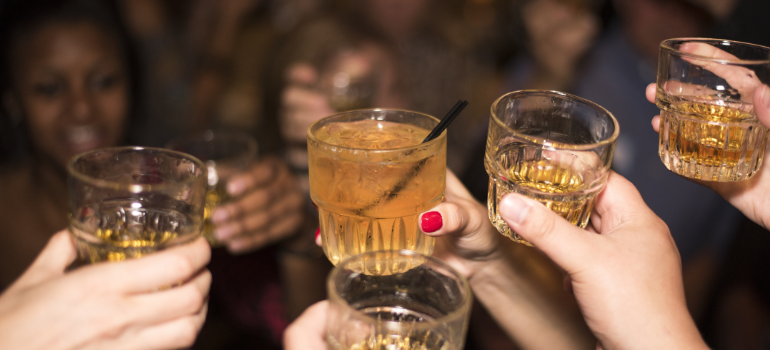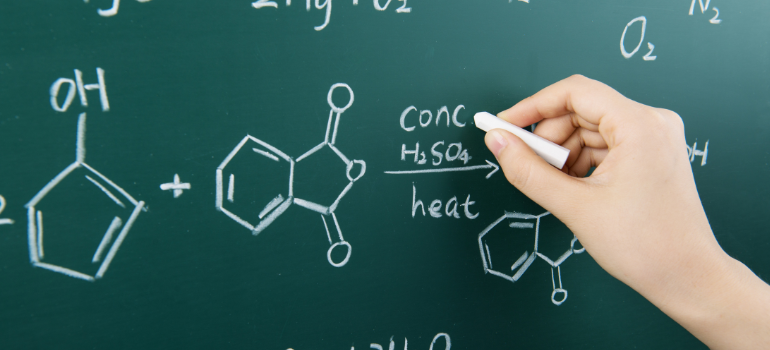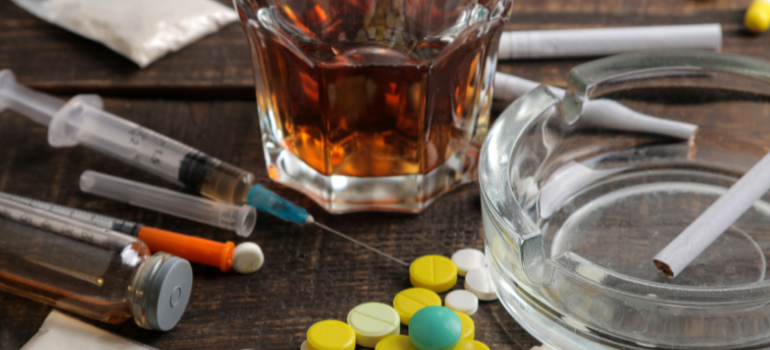Why Do People Use Cocaine When Drinking Alcohol?
Cocaine and alcohol are a popular pairing because both substances when metabolized in the body, come together as a new compound called cocaethylene. This is the main reason why people use cocaine when drinking alcohol. This powerful compound enhances the pleasant immediate effects of both substances. This can lead to a more intense feeling of euphoria, lessen the sedative effects of alcohol, and make the effects of cocaine last longer. However, cocaethylene also comes with greater toxicity for the body. It poses an immediate risk to the cardiovascular system and the liver. Here are some further details as to why people who are already abusing alcohol also reach for cocaine.
Jump to Section
Why Do People Use Cocaine When Drinking Alcohol?
Alcohol is a central nervous system depressant, while cocaine is a stimulant. Together, they create a synergistic effect that enhances euphoria and stimulation. This combination is appealing for several reasons:
- Enhanced Euphoria: Both alcohol and cocaine increase dopamine levels in the brain, which enhances feelings of pleasure and reward. Using them together amplifies this effect, creating a more intense and prolonged euphoric state.
- Increased Sociability: Cocaine increases energy, alertness, and confidence, while alcohol reduces inhibitions. This makes social interactions more pleasant and exciting, which can be particularly appealing in social settings like parties or clubs.
- Prolonged Effects: Alcohol can extend the duration of the euphoric effects of cocaine. This means that the high from cocaine lasts longer when alcohol is also consumed.
- Counteracting Sedation: Heavy alcohol users may use cocaine to counteract the sedative effects of alcohol. This can help them stay awake and alert, preventing them from passing out during a night out.
- Impaired Judgment: Alcohol impairs judgment and decision-making abilities. Under its influence, individuals may be more likely to take risks, including trying or using cocaine, that they might avoid when sober.
Addressing this dangerous combination requires understanding these factors. For those facing these challenges, alcohol rehab centers in Pennsylvania offer comprehensive treatment and support for a path to recovery.

But Why Does Drinking Alcohol Make You Crave Cocaine?
The craving for cocaine when drinking alcohol can be attributed to the formation of cocaethylene. Cocaethylene is highly addictive—more so than either alcohol or cocaine alone. This increased addiction potential makes the combination particularly enticing and leads to stronger cravings for cocaine when drinking alcohol.
Type of Cocaine Used with Alcohol
There is a difference in the type of cocaine used when combined with alcohol. A study by Gossop et al. (2006) found that concurrent alcohol and cocaine use mostly occurred among powder cocaine users, who primarily snorted the substance. Crack cocaine users almost did not use alcohol. Both powder cocaine and crack cocaine users were also cannabis users. Powder cocaine users also used amphetamines, ecstasy, and other hallucinogens, while crack cocaine users preferred heroin and non-prescription benzodiazepines.

Introducing Cocaethylene
When alcohol and cocaine are consumed together, the liver metabolizes them into a third substance called cocaethylene. This compound has a longer half-life than cocaine and produces more intense euphoric effects, which can be highly reinforcing and lead to repeated use of this combination. Cocaethylene formation occurs because ethanol inhibits the breakdown of cocaine, allowing the two substances to interact and form cocaethylene in the presence of liver enzymes, particularly carboxylesterase.
Cocaethylene can be detected in the blood, urine, and hair of individuals who have consumed both cocaine and alcohol. Its presence is a clear indicator of the concurrent use of these substances.

What Dangers People Who Use Cocaine When Drinking Alcohol Face
The health risks associated with the prolonged use of both alcohol and cocaine are numerous. Cocaine alone poses significant dangers to your body, and when combined with alcohol it can lead to:
- Increased heart rate and blood pressure
- Myocardial infarction
- Seizures
- Neurotoxicity
- Increased anxiety symptoms and paranoia
- Impaired judgment and risky behavior
- Increased toxicity from cocaethylene formation
- Cardiomyopathy
- Chronic hypertension
- Hepatotoxicity
- Liver failure
- Addiction and dependency
- Mood disorders
- Memory loss and cognitive decline
- Brain damage
- Gastritis and ulcers
- Pancreatitis
A lot of these symptoms are potentially deadly, and, in the case of increased heart rate and blood pressure, for example, only trying this combination once can lead to death. Other health risks that could be immediately deadly include seizures and risky behavior. Cocaine stays in your system for longer when cocaethylene is involved, so this can also increase the risk of seizures, overdose, and heart failure.
Effects on the Cardiovascular System
Both cocaine and alcohol elevate heart rate and blood pressure. Together, they can significantly increase the risk of acute cardiovascular events such as heart attacks, arrhythmias, and strokes. Cocaine causes vasoconstriction (narrowing of blood vessels). Combined with the increased blood pressure from alcohol, it can cause a heart attack. Young and otherwise healthy individuals have been known to get heart attacks from pairing these two substances.
Neurological Effects
The combination of cocaine and alcohol can lower the seizure threshold, making seizures more likely. Both substances affect the brain’s neurotransmitter systems. Their combined use can lead to neurotoxic effects, damaging neurons and impairing cognitive functions.
Psychological Effects
Anxiety, paranoia, and agitation are known symptoms of cocaine abuse. When paired with alcohol, these symptoms are exacerbated and can result in severe panic attacks or paranoid psychosis. Alcohol impairs judgment, and cocaine can increase impulsivity. Together, they can lead to dangerous behaviors such as unprotected sex, driving under the influence, or engaging in violent activities. Sometimes, one risky decision is enough to cause the death of the intoxicated individual and others.
Long-Term Risks
Among the long-term health risks of the concurrent use of these substances include cardiomyopathy, chronic hypertension, hepatotoxicity, liver failure, mood disorders, cognitive decline and memory loss, brain damage, gastritis and ulcers, and pancreatitis.
Cardiomyopathy is a condition in which the heart muscle weakens. This reduces its ability to pump blood. Both alcohol and cocaine are hepatotoxic (toxic to the liver). Chronic use can cause significant liver damage, including fatty liver, hepatitis, and cirrhosis.
Long-term use can contribute to the development of mood disorders, such as depression and anxiety, exacerbated by the neurochemical changes induced by both substances. Chronic use can also lead to significant cognitive impairments, including memory loss, reduced attention span, and difficulties with executive functions. The neurotoxic effects of both drugs can cause long-term brain damage, affecting overall cognitive health and functioning.
Both substances can irritate the gastrointestinal tract, leading to chronic gastritis, ulcers, and an increased risk of gastrointestinal bleeding. The combination can also lead to acute or chronic pancreatitis, a painful and potentially life-threatening condition.

Cocaine and Alcohol Use in Pennsylvania
Do people use cocaine when drinking alcohol in PA? According to the DEA Intelligence Report, there has been a substantial increase in cocaine availability in the state of Pennsylvania between the years 2017 and 2019. Illicit stimulants have also played a larger role in overdoses than they ever had before. This is due to a heightened production in recent years in South America. Around 66% of the seized cocaine by the DEA comes in powdered forms, which other studies have shown to be the preferred form of cocaine when mixed with alcohol.
When it comes to alcohol, in 2021, 311 people died in the state of Pennsylvania due to alcohol-related crashes. On average, each day, 25 crashes happen because of the influence of alcohol. Pennsylvania residents have an average of 552 drinks a year. All of these facts make both cocaine and alcohol a safety issue for the state of PA.

Help for Alcohol and Cocaine Addiction in PA
Our team at Little Creek, Lake Ariel, PA, is experienced with treating concurrent use of alcohol and cocaine. If you or a loved one are struggling with addiction to these substances, this is what the process of admission into a mental health facility such as Little Creek looks like
#1 – Initial Contact with the Rehab Center
You may call Little Creek or visit our facilities in person. Someone from our team will help you schedule your initial interview. You will also get an assessment of your healthcare coverage and find out how much of the detox and rehab treatment is covered. All healthcare options on the market must provide partial coverage, at least in response to federal law, which states that rehab must be provided.
#2 – Motivational Interview
Next, you will be interviewed by experts to determine how committed you are to recovery. This will narrow down the options available to you. MAT, for instance, can be very taxing on the body, so only highly motivated individuals qualify for this treatment, often necessary when in the presence of cocaethylene.
#3 – Choose Your Treatment Program
Once you know what your options are, taking into account your specific substance use disorder or disorders, your level of motivation, and the level of coverage you have, you and your team will choose the best option for your case. In most Pennsylvania substance abuse treatment programs, you will be required to stay full-time in the facilities, at least until you complete MAT.

#4 – Complete MAT Detox
During MAT, your medical team will administer a combination of FDA-approved drugs to you to lessen the symptoms of withdrawal. Cocaine rehab almost always requires some form of detox, and some instances of alcohol abuse may also require this. MAT can be an intense form of therapy that is very taxing for the body, so you will mostly keep to yourself in a room while nurses and doctors monitor your health. Therapy starts after this treatment is complete, and it can take up to a couple of weeks. Gentle to moderate exercise may be allowed if you feel up to it.
#5 – Start Therapy
Once detox is complete, you will start both individual and group therapy to address the root cause of your substance use disorder. Many scientifically proven therapies are employed during this time. One of the most popular options is DBT. DBT, or Dialectical Behavioral Therapy, takes components from CBT and Mindfulness. It helps people who may have trouble regulating their emotions by giving them strategies to cope with them. DBT for alcohol use disorder helps people act less impulsively, check in with their bodies for cues, and cope with their emotions in some other way than drinking, doing substances, or participating in some other destructive behavior.
#6 – Complete Therapy and Decide on the Next Step
The rehab programs at Little Creek prepare you for the next chapter of your life from day 1. However, some people may need an intermediate step before joining society. In fact, even the people with the speediest recovery still need some form of maintenance weekly therapy. For people who feel like they still need to invest time and effort into their recovery, there are sober living options available at Little Creek. In these programs, they are no longer monitored by a medical team but need to obey the rules of housing.
Breaking the Cycle of Alcohol and Cocaine Co-Use
People use cocaine when drinking alcohol due to the enhanced euphoria, prolonged effects, and increased sociability provided by this combination. The formation of cocaethylene, a highly addictive compound, further intensifies cravings for cocaine when alcohol is consumed. Differences in cocaine types also influence usage patterns, with powder cocaine users more likely to combine it with other stimulants and hallucinogens. Understanding these dynamics highlights the importance of addressing co-use behaviors. Help is available for those struggling with substance abuse through drug and alcohol treatment centers in Pennsylvania. Rehab centers offer comprehensive support and treatment options to help individuals break free from the cycle of addiction and regain control of their lives.
References
DEA Intelligence Report: Illicit Stimulant Availability Report, 2020.
Gossopt et al. (2006). Concurrent use of alcohol and cocaine: differences in patterns of use and problems among users of crack cocaine and cocaine powder. National Library of Medicine. National Institute of Health.
PA DUI Association. Crash Facts: Alcohol-Related Crashes.